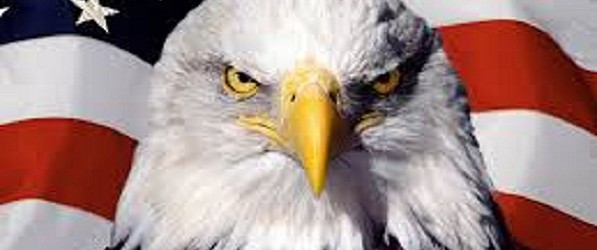One of the most important theoretical frameworks in the Realism school of thought in the discipline of International Relations is the Hegemonic Stability Theory. In this article, I will try to summarize the main pillars of Hegemonic Stability Theory and discuss United States leadership in world politics accordingly in the light of Theodore H. Cohn’s Global Political Economy Theory and Practice[1] book.
Hegemony
Hegemony as a dictionary definition means “leadership, predominance”.[2] In International Relations on the other hand, the concept of hegemony is used to describe the “influence exercised by one nation over others”.[3] Since the distribution of power is unequal in the world politics (especially from the Realist perspective which accepts inequality as normal and natural), the dominance of one country in the world politics can take place and can in fact bring stability and order to the world system. Throughout the history, some empires were able to reach this status and give direction to world order in many ways. Ottoman Empire between 15th and 17th centuries and British Empire in 19th century can be given here as recent examples. Hegemonic stability takes place when “one power can largely impose its rules and wishes (at the very least by effective veto power) in the economic, political, military, diplomatic and even cultural arenas”.[4]
While most of the IR theorists define hegemony in state-centric terms, Gramscian theorists “use the term hegemony in a cultural sense to connote the complex of ideas that social groups use to assert their legitimacy and authority”.[5] Thus, Gramscian analysts focus on hard power (military and economic superiority) and soft power (cultural superiority) together.
What are the motives of Hegemonic States?
Although all thinkers of Hegemonic Stability Theory agree that a hegemon must be willing and capable to lead, they have different views considering the methods and goals of this leadership. Basically, Realist thinkers focus on 3 different methods of leadership;[6]
- Benevolent Hegemony: Benevolent hegemony envisages a hegemonic leadership based on the promotion of generalized benefits for the world order instead of national interests (self-interests) as its ultimate goal. This model also approves benevolent methods such as rewarding rather than threats and coercion. Moreover, benevolent hegemony tries to use soft power methods at maximum level to prevent the return of hard power methods.
- Mixed Hegemony: Mixed hegemony model is based on a synthesis between national interests of the leading country and the generalized benefits of the world order, but relies more on hard power methods such as military interventions and economic sanctions. The supremacy of national interests over general interests here, for sure, can create problems for the stability of order if it is not supported by enough economic resources and military power.
- Exploitative Hegemony: Exploitative hegemony model is completely based on the hegemon’s self-interests and operates as an exploitative mechanism that always makes the hegemon stronger and richer. Exploitative hegemony model prefers only hard power methods and relies on military and economic domination rather than soft power methods. This might lead to a complete decay of the world order and the rise of challenging powers against the hegemon.
Do We Need a Hegemon?
Theorists of Hegemonic Stability Theory believe that the existence of a hegemonic state will be good for an open and stable international economic order. In their perspective, without a leader in the world affairs, international politics tend to become too chaotic. The way that the hegemon will create this stability on the other hand, is based on promoting openness and stability by helping to create and maintain liberal international regimes around the world. An open international economic order will integrate competing countries’ economies to each other and create “win-win” situations replacing “zero-sum game” understanding in foreign policy. Thus, Hegemonic Stability Theory in fact might serve more to Idealism or Liberalism in the long run, rather than Realism. In fact, this approach can be supported by historical and economic evidences. The decline of British Empire for instance in the late 19th century led to a decrease in free trade around the world and opened a way for totalitarian fascist or communist regimes implementing protectionist economic policies. This trend eventually led to two World Wars and the Great Depression. The insistence of US leadership on an open and free economic order now, thus has a strong rationale behind it.
U.S. Leadership
United States emerged as one of the world’s superpowers after the Second World War together with the USSR. During the Cold War, with the Bretton Woods system and its tools (World Bank, IMF, GATT), U.S. was able to lead the Western bloc and promoted liberalism and open economies in the free world. The U.S. power was limited to Western bloc throughout the Cold War and had very limited influence in the communist bloc. However, after the fall of Berlin Wall and the collapse of USSR, the U.S. became the only country to lead in international politics in many ways. The U.S. is still the strongest military power and the most important economic and diplomatic actor in the world politics and has the ability to lead international politics. However, the nature of U.S. leadership as the new hegemon in the 21st century is open to discussion.
Barack Obama’s leadership in recent years for instance, can be given as an example of benevolent hegemony in many ways. Obama promoted free trade and open and democratic regimes around the world since his first day in the office but did not give up from the leadership role assumed by USA after the end of Cold War. Recent economic agreements such as Trans-Pacific Agreement and Transatlantic Trade and Investment Partnership are concrete steps of Obama administration to promote free trade and a stable economic order. However, Obama’s push for democratic transitions in some North African and Middle Eastern states resulted with a great failure since economic, sociocultural and sociopolitical conditions of these countries did not favor democratic regimes. In addition, this policy alienated some authoritarian regimes from the U.S. leadership and provided a comfortable ground for regional powers such as Russian Federation and People’s Republic of China to have more influence over these countries not having democratic regimes. Obama stayed loyal to international law and UN resolutions and worked for international stability together with American national interests, but the lack of coercive methods also led to a turbulence and civil wars in some countries including Iraq and Syria.
George W. Bush’s leadership on the other hand, can be given as an example of mixed hegemony model. Bush, during his Presidency, tried to maximize American national interests and world stability together. Iraqi intervention or the Second Gulf War for example, can be seen as a move to topple down a totalitarian regime, also favoring American interests by bringing U.S. control over the rich Iraqi natural resources. Bush administration’s problem on the other hand, was related to growing negative reactions and anger towards the U.S. leadership around the world due to extensive use of coercive methods. In fact, after the 9/11 incident, Bush administration had the support of nearly all countries in the world system and made a successful military operation to Afghanistan afterwards. However, the Second Gulf War, which was seen as an illegal by many major powers in the world, made Bush administration closer to exploitative hegemony model and led to a considerable decrease in the American soft power and support.
Is U.S. Hegemony Declining?
In recent years, we observe a growing literature about the decline of United States and the rise of Russia and China as new global powers. The spread of regional economic alliances (Eurasian Economic Union, Shanghai Cooperation Organization, BRICS) and even new international banks (BRICS Bank, Asian Infrastructure Investment Bank) also strengthen this trend. Voices around the world defending a multi-polar world order are increasing. However, this approach is immature in many ways since the position of Russia and China in international affairs -for the moment- is still limited to prevent U.S. geopolitical moves (as we have seen during the Arab Spring) and these countries are not capable of creating a world order beyond their “near abroad”, using Russian President Vladimir Putin’s famous term. Thus, Chinese and Russian power should still be categorized within the boundaries of regionalism and regional superpower, whereas the U.S. is a global power having problems of reaching all parts of the world and integrating all countries and economies to world system.
In fact, Obama administration made some very successful moves to continue to lead in world politics. Recent agreement with Islamic Republic of Iran on the nuclear program which will eventually integrate Iran more to the international system for instance, is a historical success if this country will make positive steps from now on. Tunisia’s democratic transition as the only successful country of the Arab Spring process was another success for Obama. Rapprochement with Cuba, Vietnam and many other Asian states can also be assessed from this perspective. However, the inability to create a democratic and secular model together in the Islamic world, eventually led to an unsuccessful picture for the Obama administration considering their Middle East policy. In addition, the growing integration of the People’s Republic of China into the world economic system, created a stronger China that has started to challenge U.S. leadership in some ways.
What to expect from the next U.S. President?
The U.S. will be having its new President by the early 2017. Hillary Clinton for Democrats and Jeb Bush for Republicans seem to be the two candidates that will be racing for replacing Obama’s post. The next President’s leadership methods and goals will be of crucial importance not only for USA, but also for the world. Clinton presidency will probably continue with Obama’s benevolent hegemony model and try to avoid coercive methods and lean more on the soft power and economic tools to further liberalize the world order. This seems more attractive to liberal and left wing people around the world since it might avoid wars. Bush presidency on the other hand, might once again implement mixed hegemony model and effectively use coercive methods. Considering the presence of ISIS and Russian threats towards Eastern Europe, mixed hegemony model might be necessary in some ways for the protection of U.S. leadership in the world. However, in this case, the U.S. has to work more on preventing the spread of anti-Americanism in the world as in the case of Second Gulf War. The only way to do this seems like using international organizations in a more efficient way and take their support (United Nations, World Bank, IMF etc.) for international political or economic designs as well as military interventions.
Dr. Ozan ÖRMECİ
REFERENCES
- Cohn, Theodore H. (2000), Global Political Economy Theory and Practice, Addison Wesley Longman, Inc. Available at Amazon: http://www.amazon.com/Global-Political-Economy-5th-Fifth/dp/B0072UXPOY/.
- Dictionary.com, http://www.dictionary.com.
[1] Cohn, Theodore H. (2000), Global Political Economy Theory and Practice, Addison Wesley Longman, Inc. Available at Amazon: http://www.amazon.com/Global-Political-Economy-5th-Fifth/dp/B0072UXPOY/.
[2] Dictionary.com.
[3] Dictionary.com.
[4] Cohn, Theodore H. (2000), Global Political Economy Theory and Practice, pp. 68-69.
[5] Cohn, Theodore H. (2000), Global Political Economy Theory and Practice, p. 69.
[6] Cohn, Theodore H. (2000), Global Political Economy Theory and Practice, p. 69.
























































